Showing Spotlights 97 - 104 of 200 in category All (newest first):
 Solar cells absorb incoming sunlight and convert a part of photon energy into electricity. The remainder of photon energy is dissipated as heat. Although the idea is rather counter-intuitive, 'reverse solar cell' systems can also generate electric power by emitting rather than absorbing photons. Such systems - known as thermoradiative cells - generate voltage and electric power via non-equilibrium thermal radiation of infrared photons. Thermoradiative cells offer an opportunity to generate clean energy by harvesting radiation from largely untapped terrestrial thermal emission sources, potentially including the Earth itself.
Solar cells absorb incoming sunlight and convert a part of photon energy into electricity. The remainder of photon energy is dissipated as heat. Although the idea is rather counter-intuitive, 'reverse solar cell' systems can also generate electric power by emitting rather than absorbing photons. Such systems - known as thermoradiative cells - generate voltage and electric power via non-equilibrium thermal radiation of infrared photons. Thermoradiative cells offer an opportunity to generate clean energy by harvesting radiation from largely untapped terrestrial thermal emission sources, potentially including the Earth itself.
Oct 14th, 2016
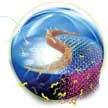 Researchers have explored the role of intrinsic bulk electrical conductivity and surface polarity in the electrocatalysis of polysulfide redox reactions. They synthesized highly porous and conductive titanium carbide (TiC)-based composite cathode materials and to assemble lithium-sulfur (Li-S) batteries with high sulfur loading. Li-S cells employing the as-synthesized TiC-based cathode exhibited reduced internal resistance, enhanced energy efficiency, and prolonged service life.
Researchers have explored the role of intrinsic bulk electrical conductivity and surface polarity in the electrocatalysis of polysulfide redox reactions. They synthesized highly porous and conductive titanium carbide (TiC)-based composite cathode materials and to assemble lithium-sulfur (Li-S) batteries with high sulfur loading. Li-S cells employing the as-synthesized TiC-based cathode exhibited reduced internal resistance, enhanced energy efficiency, and prolonged service life.
Oct 10th, 2016
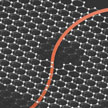 Traditionally, the size of electrode materials in supercapacitors is reduced to nanometers to enable high surface area and more room for storing more amounts of energy. But the microscopic electron distribution in nanocarbons limits the total amount of stored energy through a property called 'quantum capacitance'.
Although a lot of charge could be stored in the pores on nanocarbons due to their high surface area, their inherently low quantum capacitance reduces the net energy that could be drawn from supercapacitors. Researchers have controllably added nitrogen atoms to graphene to achieve carbon supercapacitors ready for practical applications.
Traditionally, the size of electrode materials in supercapacitors is reduced to nanometers to enable high surface area and more room for storing more amounts of energy. But the microscopic electron distribution in nanocarbons limits the total amount of stored energy through a property called 'quantum capacitance'.
Although a lot of charge could be stored in the pores on nanocarbons due to their high surface area, their inherently low quantum capacitance reduces the net energy that could be drawn from supercapacitors. Researchers have controllably added nitrogen atoms to graphene to achieve carbon supercapacitors ready for practical applications.
Aug 25th, 2016
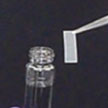 The fact that temperature differentials (heat) are ubiquitously present in our environment makes thermoelectric energy harvesting a highly attractive research field. New work highlights the fabrication of flexible thermoelectric materials and modules by merging colloidal nanomaterials (quantum dots) that can be tuned for efficient heat-to-electricity energy conversion with naturally abundant cellulose paper that are low in cost and have inherently low thermal conductivity.
The fact that temperature differentials (heat) are ubiquitously present in our environment makes thermoelectric energy harvesting a highly attractive research field. New work highlights the fabrication of flexible thermoelectric materials and modules by merging colloidal nanomaterials (quantum dots) that can be tuned for efficient heat-to-electricity energy conversion with naturally abundant cellulose paper that are low in cost and have inherently low thermal conductivity.
Aug 23rd, 2016
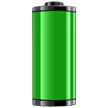 Sodium-ion batteries (SIBs) represent an attractive alternative to lithium-ion batteries, owing to the fact that sodium resources are practically inexhaustible and evenly distributed around the world while the ion insertion chemistry is largely identical to that of lithium. Researchers have now rationally designed and fabricated a sodium ion full battery where both of the cathode and anode materials possessed very unique two-dimensional nanostructured architecture. The 2D nanostructured architecture results in excellent rate capability and stable cycling performance.
Sodium-ion batteries (SIBs) represent an attractive alternative to lithium-ion batteries, owing to the fact that sodium resources are practically inexhaustible and evenly distributed around the world while the ion insertion chemistry is largely identical to that of lithium. Researchers have now rationally designed and fabricated a sodium ion full battery where both of the cathode and anode materials possessed very unique two-dimensional nanostructured architecture. The 2D nanostructured architecture results in excellent rate capability and stable cycling performance.
Aug 17th, 2016
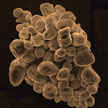 Although developed only recently, inorganic halide perovskite quantum dot systems have exhibited comparable and even better performances than traditional quantum dots in many fields. They are expected to be applied in display and lighting technologies. Researchers now have reported an interesting cyclable surface dissolution and recrystallization phenomenon of inorganic perovskite crystals. This allows them to freely change size between nanometer and micrometer scales, and can be used to healing the defects inside perovskite films and hence improve the performances of optoelectronic devices.
Although developed only recently, inorganic halide perovskite quantum dot systems have exhibited comparable and even better performances than traditional quantum dots in many fields. They are expected to be applied in display and lighting technologies. Researchers now have reported an interesting cyclable surface dissolution and recrystallization phenomenon of inorganic perovskite crystals. This allows them to freely change size between nanometer and micrometer scales, and can be used to healing the defects inside perovskite films and hence improve the performances of optoelectronic devices.
Jul 7th, 2016
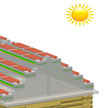 Self-powered nanotechnology based on these nanogenerators aims at powering nanodevices and nanosystems using the energy harvested from the environment in which these systems are suppose to operate. An interesting approach comes from a group of Chinese scientists who propose to scavenge the large amounts of wasted wind energy in cities: they propose hybridized nanogenerator that consists of a solar cell and a triboelectric nanogenerator, which can be utilized to individually or simultaneously scavenge solar and wind energies.
Self-powered nanotechnology based on these nanogenerators aims at powering nanodevices and nanosystems using the energy harvested from the environment in which these systems are suppose to operate. An interesting approach comes from a group of Chinese scientists who propose to scavenge the large amounts of wasted wind energy in cities: they propose hybridized nanogenerator that consists of a solar cell and a triboelectric nanogenerator, which can be utilized to individually or simultaneously scavenge solar and wind energies.
May 23rd, 2016
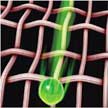 Today, the best performing battery in terms of specific energy and specific power is the secondary lithium-metal (Li-metal). However, uncontrolled dendrite growth during Li depositing/stripping in rechargeable Li metal based batteries has prevented their practical applications over the past 40 years. To address this issue, researchers have now proposed a novel method of modulating the lithium ion adsorption to suppress lithium dendrite growth by employing glass fiber as solid electrolytes with plenty of polar functional groups as the interlayer between Li metal anode and routine polymer separator.
Today, the best performing battery in terms of specific energy and specific power is the secondary lithium-metal (Li-metal). However, uncontrolled dendrite growth during Li depositing/stripping in rechargeable Li metal based batteries has prevented their practical applications over the past 40 years. To address this issue, researchers have now proposed a novel method of modulating the lithium ion adsorption to suppress lithium dendrite growth by employing glass fiber as solid electrolytes with plenty of polar functional groups as the interlayer between Li metal anode and routine polymer separator.
Apr 19th, 2016
 Solar cells absorb incoming sunlight and convert a part of photon energy into electricity. The remainder of photon energy is dissipated as heat. Although the idea is rather counter-intuitive, 'reverse solar cell' systems can also generate electric power by emitting rather than absorbing photons. Such systems - known as thermoradiative cells - generate voltage and electric power via non-equilibrium thermal radiation of infrared photons. Thermoradiative cells offer an opportunity to generate clean energy by harvesting radiation from largely untapped terrestrial thermal emission sources, potentially including the Earth itself.
Solar cells absorb incoming sunlight and convert a part of photon energy into electricity. The remainder of photon energy is dissipated as heat. Although the idea is rather counter-intuitive, 'reverse solar cell' systems can also generate electric power by emitting rather than absorbing photons. Such systems - known as thermoradiative cells - generate voltage and electric power via non-equilibrium thermal radiation of infrared photons. Thermoradiative cells offer an opportunity to generate clean energy by harvesting radiation from largely untapped terrestrial thermal emission sources, potentially including the Earth itself.
 Subscribe to our Nanotechnology Spotlight feed
Subscribe to our Nanotechnology Spotlight feed





